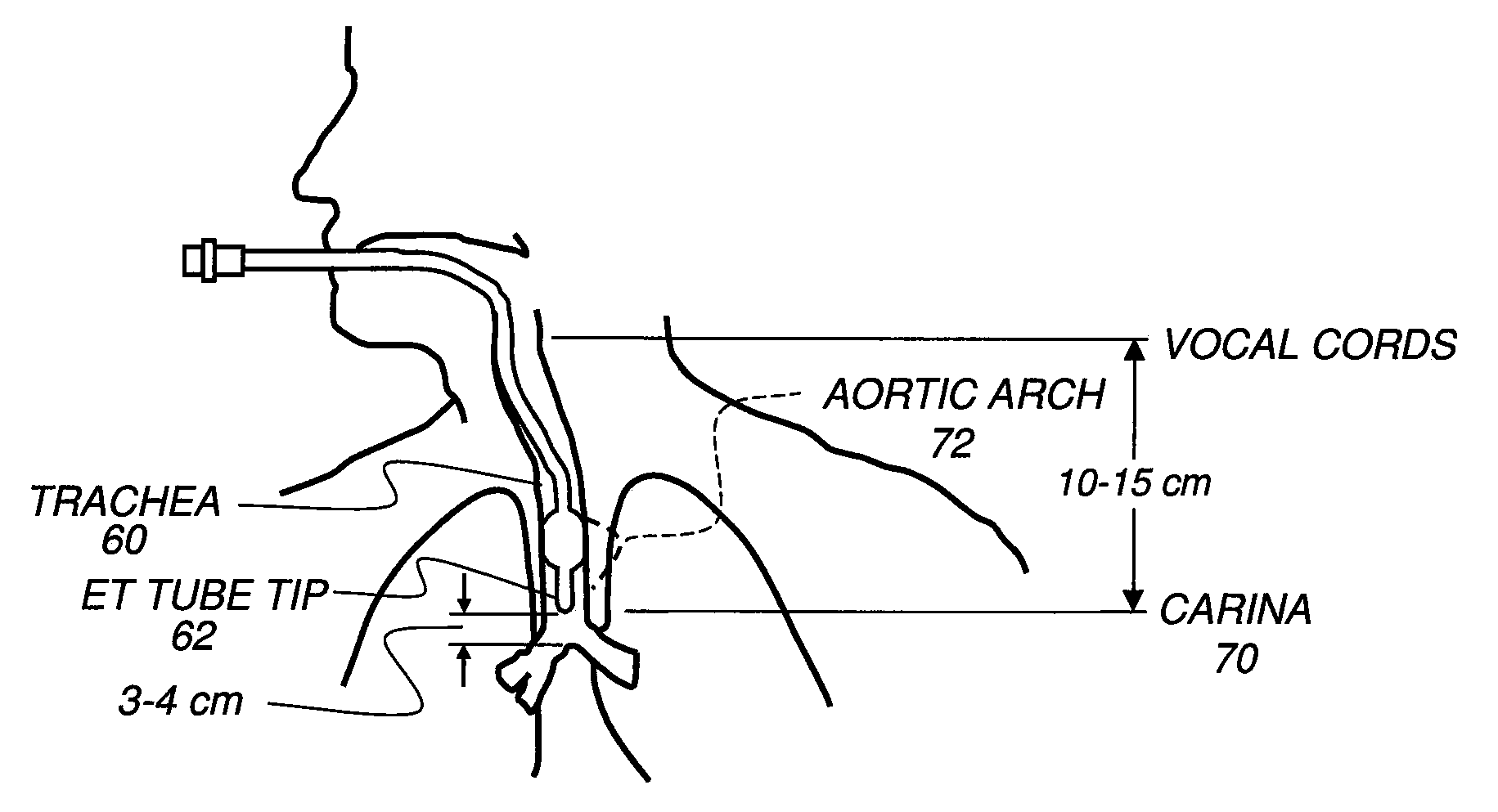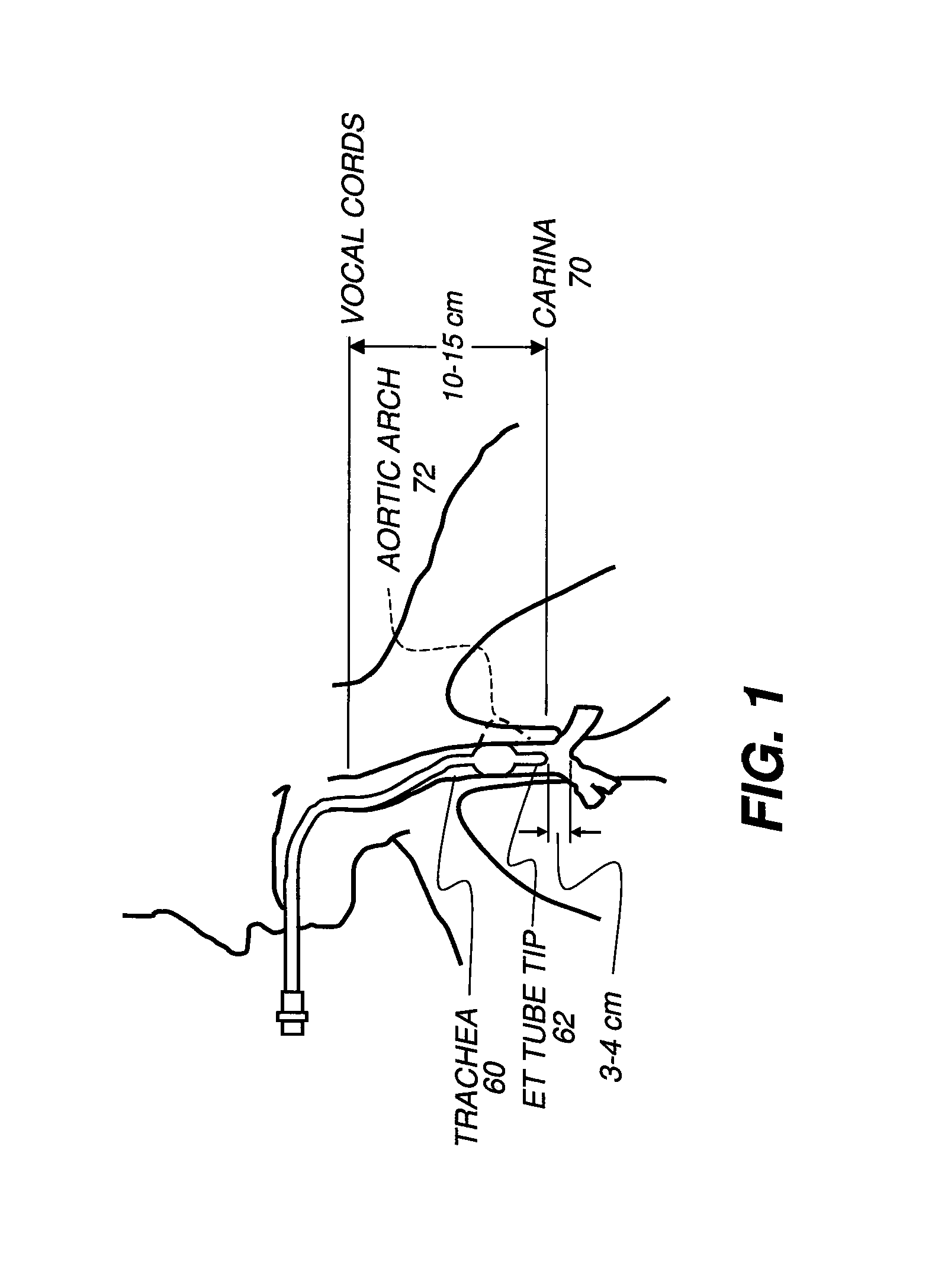Method for detecting anatomical structures
a technology of anatomical structure and detection method, which is applied in the field of diagnostic image analysis, can solve the problems of patient discomfort, ineffective treatment, and difficulty in detecting the proper position of the et tube using automated image analysis tools
- Summary
- Abstract
- Description
- Claims
- Application Information
AI Technical Summary
Benefits of technology
Problems solved by technology
Method used
Image
Examples
Embodiment Construction
[0030]It is to be understood that elements not specifically shown or described in this description may take various forms well known to those skilled in the art. The sequence of steps of the present invention are executed by a computer or other type of control logic processor that is capable of handling the required amount of image data and that is programmed with appropriate instructions for image analysis and the requisite decision-making. This control logic processor may be provided as part of conventional image processing and display system hardware or may be provided by dedicated hardware or software that accepts and processes input images.
[0031]The description that follows focuses on carina detection for detecting ET tube placement in a chest x-ray as one example of the method of the present invention. It can be appreciated that similar steps would apply for detection of tips for other types of anatomical structures in other types of x-ray or other diagnostic images, with the ...
PUM
 Login to View More
Login to View More Abstract
Description
Claims
Application Information
 Login to View More
Login to View More - R&D
- Intellectual Property
- Life Sciences
- Materials
- Tech Scout
- Unparalleled Data Quality
- Higher Quality Content
- 60% Fewer Hallucinations
Browse by: Latest US Patents, China's latest patents, Technical Efficacy Thesaurus, Application Domain, Technology Topic, Popular Technical Reports.
© 2025 PatSnap. All rights reserved.Legal|Privacy policy|Modern Slavery Act Transparency Statement|Sitemap|About US| Contact US: help@patsnap.com



